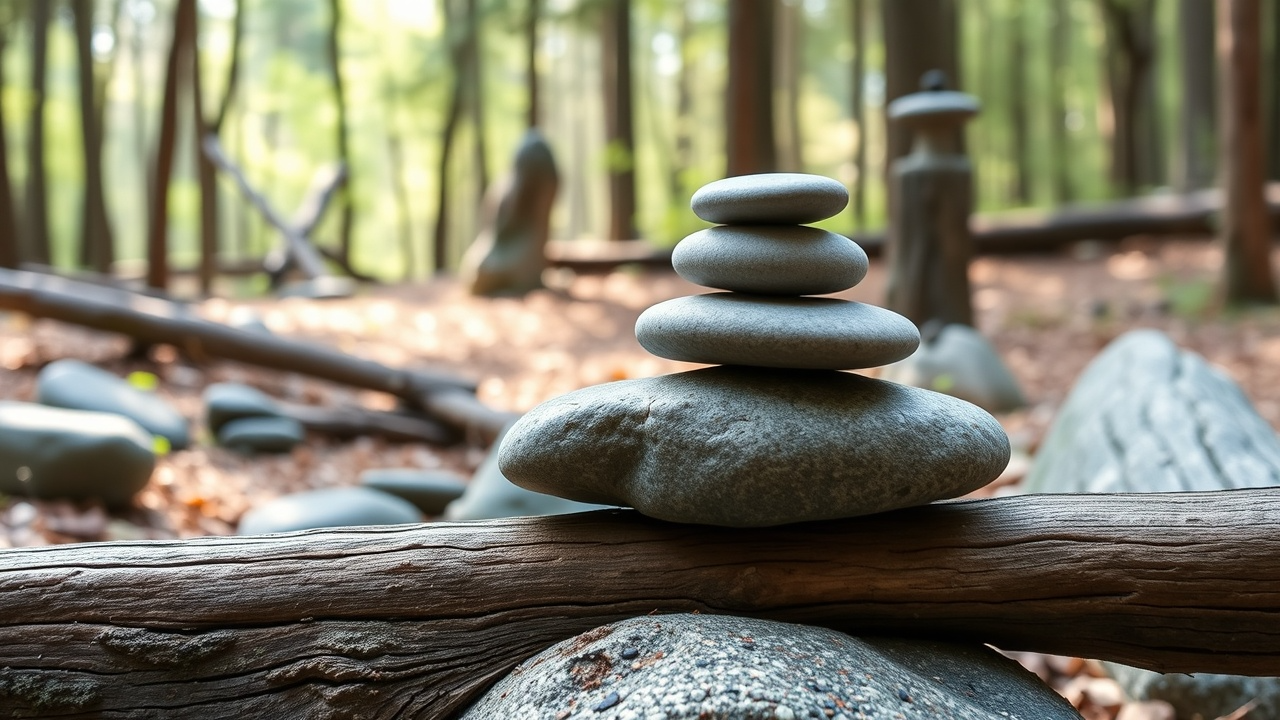Bringing Sthira and Sukha into Daily Life
In my last post, we explored Sthira and Sukha – stability and ease – while practicing yoga on the mat. Now, let’s talk about taking those good vibes off the mat and into our daily lives! This is where our yoga practice really starts to transform us, as we learn to embody these qualities in everything we do.
Think about it: every action, big or small, involves a blend of three things: our bodies, our thoughts, and our emotions. For example, imagine you’re swamped with tasks at work. Your shoulders might start to tense up, you might feel overwhelmed and stressed, and your mind could get caught in a loop of “this will never end!” thoughts. Or, think about giving a presentation. Your palms might get sweaty, you could feel anxious about public speaking, and your mind might jump ahead to worst-case scenarios. In situations like these, whether it’s a pile of work or a public speaking gig, it’s easy to get pulled away from the present moment. We get caught up in physical tension, stressful emotions, and worried thoughts. But here’s the good news: by becoming aware of how these three elements interact, we can learn to find our center again and come back to the present.
Embodying Sthira and Sukha: A Path to Presence
1. Acknowledge and Observe (The First Step is Awareness)
- Body: Notice your physical sensations without judgement. Ask “Is my shoulders tense? Is my breath shallow? Do I have a knot in your stomach?” Simply observe these sensations. Don’t try to change them, simply notice them.
- Thoughts: What thoughts are running through your mind? Are they worries, judgments, or stories about the past or future? Again, simply observe them as mental events. Try not to get caught up in the content of the thoughts; just acknowledge their presence.
- Emotions: Identify the emotions you’re experiencing. Are you feeling stressed, anxious, frustrated, or overwhelmed? Name the emotion if you can. “I’m feeling anxious.” This act of naming helps to create a little distance and allows you to observe the emotion rather than be consumed by it.
2. Connect with Your Breath (The Bridge to the Present)
- Bring your attention to your breath. Notice the sensation of the air entering and leaving your body. Feel the rise and fall of your chest or abdomen. The breath is a powerful anchor to the present moment because it’s always happening right now.
- You can deepen your breath if it feels helpful, but don’t force it. Just allow your breath to flow naturally. Even a few conscious breaths can make a difference.
3. Ground Yourself (Finding Stability)
- Physical Grounding: Feel your feet on the ground. Notice the contact points between your body and the chair or floor. This physical connection helps to bring you back to the here and now. You can also try gentle movements, like rolling your shoulders or stretching your neck, to release tension and reconnect with your body.
- Mental Grounding: Bring your attention to your senses. What can you see, hear, smell, taste, or touch in this moment? Engaging your senses helps to anchor you in the present reality.
4. Reframe and Choose (Creating Space):
- Now that you’ve created a little space between yourself and your thoughts and emotions, you have the opportunity to reframe the situation or. How are your thoughts helpful? Are they based on facts or assumptions? Can you choose a different way of looking at the situation?
- This is also where you can bring in the principles of Sthira and Sukha. Even in a challenging situation, can you find a sense of stability (Sthira) in your body and mind? Can you cultivate a sense of ease (Sukha) by accepting the present moment and choosing a more compassionate response to yourself?
5. Integrate and Practice (Making it a Habit):
- The more you practice these steps, the easier it will become to return to the present moment when you feel yourself getting pulled away. Try to incorporate these practices into your daily life, even in small ways. Take a few conscious breaths throughout the day. Notice your body sensations. Pay attention to your thoughts and emotions.
Real Life Example: Overwhelmed at Work
- Acknowledge: “My shoulders are really tight. I’m feeling overwhelmed. My mind is racing with thoughts about all the things I have to do.”
- Breath: Take a few slow, deep breaths. Notice the rise and fall of your chest.
- Ground: Feel your feet on the floor. Notice the sounds around you.
- Reframe: “These thoughts about being overwhelmed are just thoughts. I can handle this one step at a time. I can choose to focus on what’s important right now.” (Finding Sthira and Sukha: “Even though I’m feeling stressed, I can find stability in my breath. I can find ease by accepting that I can only do my best in this moment.”)
- Integrate: Continue to check in with yourself throughout the day. Use your breath as an anchor whenever you feel yourself getting overwhelmed.
Remember, this is a journey, not a destination. Be kind to yourself, and celebrate your progress along the way!
Guided Mindfulness Meditation
If you like, try this guided mindful meditation: Grounding with Anchor Points.
